|
View as a webpage
|
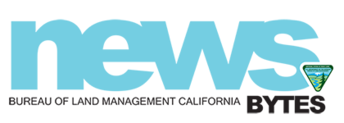
Palm Spring-South Coast Field Office
|
|
ISSUE 842 - February 28, 2019
|
|
|
- Forest Management
- Track the Bloom
- Headlines and Highlights
- BLM and DOI Highlights
- Wildlife Question of the Week
- Upcoming Events
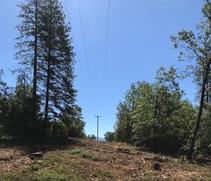
BLM Taking Proactive Approach to Reduce Wildfire Risks in California
In advancing the Department of the Interior’s commitment to reduce wildfire risk, the Bureau of Land Management released its Hazard Removal and Vegetation Management Project Programmatic Environmental Assessment. This assessment covers approximately 551,000 acres of BLM-managed public land in central and northern California and streamlines the process for right-of-way holders, utility companies, and counties to treat vegetation and remove hazardous trees within 200 feet of critical infrastructure to reduce wildfire risk. (BLM California Facebook)
|
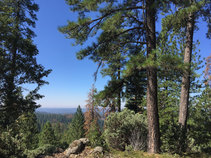
Promoting Active Management of America's Forests, Rangelands, and Other Federal Lands To Improve Conditions and Reduce Wildfire Risk
It is the policy of the United States to protect people, communities, and watersheds, and to promote healthy and resilient forests, rangelands, and other Federal lands by actively managing them through partnerships with States, tribes, communities, non-profit organizations, and the private sector. For decades, dense trees and undergrowth have amassed in these lands, fueling catastrophic wildfires. These conditions, along with insect infestation, invasive species, disease, and drought, have weakened our forests, rangelands, and other Federal lands, and have placed communities and homes at risk of damage from catastrophic wildfires. (Executive Order 13855, Federal Register)
|
|
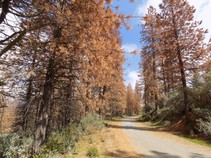
BLM Taking Steps to Reduce Wildfire Risks by Removing Dead, Dying Trees
The Bureau of Land Management recently announced plans to remove hazardous trees in approximately 551,000 acres of BLM-managed public land in central and northern California in a plan that is now up for public review. The plan is outlined in the Hazard Removal and Vegetation Management Project Programmatic Environmental Assessment, which BLM officials said “streamlines the process for right-of-way holders, utility companies, and counties to treat vegetation and remove hazardous trees within 200 feet of critical infrastructure to reduce wildfire risk.” (The Ukiah Daily Journal)
Related: BLM taking proactive approach to reduce wildfire risks in California (Lake County News)
Related: BLM Releases Hazard Tree Removal Analysis (Yuba Net)
|

Bureau of Land Management Puts Together Plan to Reduce State's Wildfire Risk
On the heels of a deadly 2018 fire season, the Bureau of Land Management has turned in its plan to reduce wildfire risk. The Bureau of Land Management's environmental assessment covers some 551,000 acres of public land in Northern and Central California. If approved, the plan would streamline the process for right-of-way holders, utility companies and counties to remove dead and dying trees, clear vegetation, conduct prescribed burns and create defensible space. All of these efforts would be used to reduce wildfire risk. The assessment decision is subject to a 30-day appeal period. (Action News Now Chico-Redding)
|
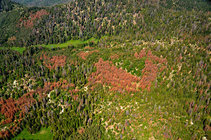
Survey Finds 18 Million Trees Died in California in 2018
The USDA Forest Service announced today that an additional 18 million trees, mostly conifers, died in California since fall 2017. Over 147 million trees have died across 9.7 million acres of federal, state, local and private lands in California since the drought began in 2010. Since 2016, federal, state, and local partners have felled 1.5 million dead trees, primarily those posing the highest hazards to life and property. While the 2016-2017 winter officially ended California’s drought, below-average precipitation recorded in 2017-2018 slowed the recovery of the state’s surviving trees. Dead trees continue to pose a significant hazard to people and critical infrastructure, mostly centered on the west side of the southern Sierra Nevada range; however, other forested areas throughout the state and at higher elevations have also been impacted. (USFS news release)
Related: Restoring Health and Reducing Wildfire Threat to California's Forests (California Forest Management Task Force website)
|
Upcoming travel plans? Please remember to check road conditions and closures. Travelers can also download the QuickMap app, quickmap.dot.ca.gov, or call 1-800-427-7623 for constantly updated highway information. (California Department of Transportation)
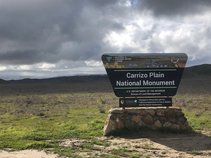
#TracktheBloom
This time of year there is a lot of #CAlove, especially with the much anticipated wildflowers. We will continue sharing updates from your public lands to help visitors know what to realistically expect when it comes to wildflower blooms. As you make plans to #RoadTripCalifornia, please remember the importance of Leave No Trace principles.
As of February 21, 2019, it is currently snowing in Carrizo Plain National Monument, so no big blooms of flowers yet.
Related: Leave No Trace Center for Outdoor Ethics
Related: Theodore Payne Wild Flower Hotline
Related: Desert USA Wildflower Report
|
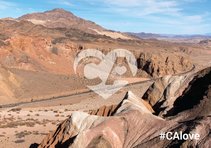
Time to Hit the Road and Explore the Golden State
Endless sunshine, amazing cities, best-in-class theme parks, incredible natural treasures—no matter what you want to do and see on your next vacation, California has it. But here's the best part: California has all the iconic destinations you've dreamed of visiting, plus a countless number of incredible off-the-beaten-track experiences. With our exclusive trip itineraries, you can visit bucket-list landmarks like Yosemite, then follow a wine road or visit a craft brewery. Top theme parks, secret beaches, city finds—they’re all here in easy-to-follow road trips that visit every corner of the state. So start dreaming about your next California vacation—and dream big. (Visit California website) Follow #RoadTripCalifornia!
|
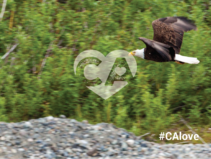
Travelers Share Their Love of California
"We are always heartened to hear from visitors who are passionate about traveling to California, and any time we ask folks to share their #CAlove they are eager to respond. Visit California gathered some comments from people who just can't wait to get back to the state." (Visit California website)
Related: The Bureau of Land Management manages 15 million acres of public lands in California - nearly 15 percent of the state - and 1.6 million acres in northwestern Nevada. Follow us on Facebook and Twitter!
|
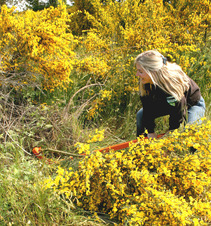
BLMer Jennifer Wheeler Receives 21st Century Conservation Service Corps Champion of the Year Award
The Partnership for the 21st Century Conservation Service Corps announced the 2019 recipients of the 21CSC National Distinction Award and Champion of the Year Award. In her role with the BLM, Jennifer Wheeler has worked with the California Conservation Corps for over two decades, facilitating life-changing service experiences for rural and urban youth from almost every social and economic demographic within the state of California. (BLM California Facebook)
|
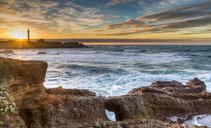
Did You Know of the Best Kept Secrets of California?
These remote and surprising spots fly under the radar for even the most well-versed California travelers. From scenic byways to wine country destinations to historic honky-tonks, these locations make great trips for those who like to explore a little off the beaten path. Discover these hidden gems of California on your next trip to the state. (Dainik Bhaskar Post)
Related: Connecting the Pacific Ocean with the land (California Coastal National Monument website)
|
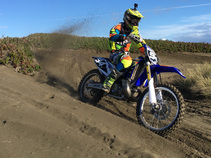
BLM Seeks Comments on 2019 Off-Highway Vehicle Recreation Proposals
The Bureau of Land Management invites the public to comment on its California State Parks, Off-Highway Motor Vehicle Recreation Division, off-highway vehicle recreation proposals for 2019, which are available on the Internet for review and comment from March 5 to May 6 at www.ohv.parks.ca.gov. Approximately 30 projects throughout the state have been proposed, including OHV rules enforcement, operation and maintenance, restoration work and other activities. The proposals are funded through the Grants and Cooperative Agreements Program, sponsored by the state of California, which provides financial assistance to cities, counties, districts, federal and state agencies, educational institutions, federally recognized Tribes and nonprofit entities. (BLM news release)
|

BLM Announces Leadership Changes in DC, Alaska, and Idaho
The Bureau of Land Management today announced leadership appointments at the agency’s headquarters and in its Alaska and Idaho state offices. New Deputy Director for Operations Michael Nedd, Alaska State Director Chad Padgett, and Idaho State Director John Ruhs all bring decades of experience and leadership in public land management that will serve to advance the BLM’s mission and activities in the years ahead. (BLM news release)
|
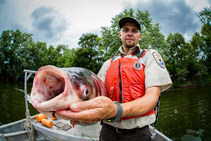
Invasive Species: Finding Solutions to Stop Their Spread
Some are sharp, some are spotted and some are slithery, but all invasive species are bad for public lands. Invasive species are nonnative organisms whose introduction to a particular ecosystem can cause economic or environmental harm, or harm to human, animal, or plant health. Some nonnative species don’t cause harm (They’re not “invasive”), but those that do can cost billions in damage and disrupt an environment’s natural balance. No matter where they came from, how they got here or what harm they cause, invasive species are a serious concern for all who protect and preserve America’s public lands and waters. (DOI blog)
|
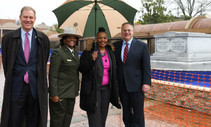
7 Things to Know About Martin Luther King, Jr. National Historical Park
With a vision that changed the world and a voice that echoes through time, Dr. Martin Luther King, Jr. was one of the most influential people in American history. While not the beginning or the end of the global civil rights movement, Dr. King represents an important chapter in our story as a people struggling for freedom and equality for all. One of the best places to learn about Dr. King is Martin Luther King, Jr. National Historical Park in Atlanta, Georgia. Walking in his footsteps and connecting with him as a leader and a human being helps preserve his legacy and keep his dream alive. (DOI news release)
Related: Acting Secretary David Bernhardt Visits Martin Luther King, Jr. National Historical Park (DOI news release)
|

For a Good Laugh
Can wild animals take selfies?
Keep scrolling to find out!
|
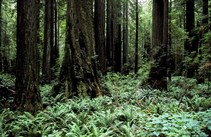
March 1: Public Invited to Free, Guided Birding Walk at Headwaters Forest Reserve
The diversity of bird life in the Headwaters Forest Reserve will be on display in a free, guided birding walk, Friday, March 1, at the Headwaters Forest Reserve. Participants will meet at 10 a.m. at the Bureau of Land Management Elk River Trailhead near Eureka, and then spend three hours spotting birds along a two-mile walk. Wildlife biologist Russ Namitz will lead the outing, helping participants to identify birds by sight, their sounds and other fine points. He will discuss bird habitat, ecology and migration. (BLM news release)
|
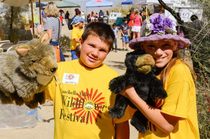
March 3, April 7 and May 5: Story Time and Young Explorers at Santa Rosa and San Jacinto Mountains National Monument
Story Hour for children ages 5 to 7: Join us in our Kid’s Corner to hear a story about nature and creatures that live in the desert of the Santa Rosa and San Jacinto Mountains National Monument. Reading will be followed by an indoor or outdoor arts and crafts activity.
Young Explorers for ages 8 and above: Compass and maps are a very important part of your 10 essentials when hiking in the desert. Let’s explore and have fun learning about them!
RSVP required. Event will take place from 1 to 2 p.m. Please visit www.desertmountains.org/calendar or call (760) 862-9984 for more information.
|
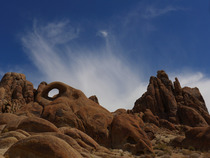
March 5: Alabama Hills Public Workshop Scheduled for March 5
The Bureau of Land Management Bishop Field Office, in partnership with the Alabama Hills Stewardship Group, will host a public workshop on March 5 to share and gather information and ideas about current activities and management opportunities in the Alabama Hills. The informal workshop will run from 6 p.m. to 8 p.m. at the Lone Pine Paiute-Shoshone Community Building, 975 Paya Rd., Lone Pine. (BLM news release)
|
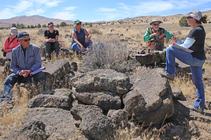
August 2-4: 2nd Annual Wild Horse Walkabout
Save the date! The public is invited to the Twin Peaks Herd Management Area near Susanville, CA. Attendees will spend the two nights out on the range to learn about how the BLM monitors rangeland and herd health from a BLM wild horse and burro specialist. Don't miss this unique opportunity to learn more about how BLM manages wild horses and burros. (BLM California Facebook)
|
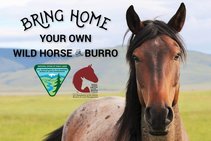
Ongoing: Bring Home a Wild Horse or Burro
The BLM Wild Horse and Burro Program is excited to announce nearly 70 events this year as part of BLM's efforts to find good homes for our nation's wild horses and burros. Known for their intelligence, endurance and loyalty, wild horses and burros, with the right training, are outstanding for trail riding, packing, working and have successfully competed for awards in numerous fields from endurance riding to dressage. With more than 81,000 wild horses and burros on BLM-managed public lands, these wild icons of our American history need your help more than ever. Without any natural predators that can control population growth, wild horse and burro herds grow rapidly on the range and can quickly overcome the land's ability to support them. The BLM works to maintain healthy wild herds by gathering excess animals and placing them into good homes. (BLM website)
|
|
WILDLIFE QUESTION OF THE WEEK ANSWER
Can wild animals take selfies? It appears so. (Wildlfie Selfies via USFWS)
|
|
|
News.Bytes is a publication of the Bureau of Land Management in California.
Bureau of Land Management
California State Office
2800 Cottage Way, Suite W1623
Sacramento, CA 95825
(916) 978-4600
Send comments to the News.Bytes Team | Subscribe to News.Bytes | Unsubscribe
|
     
|
|
|